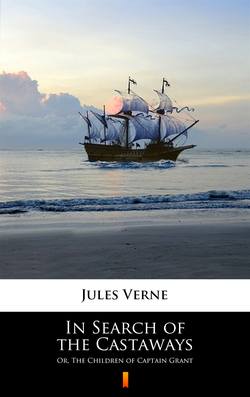Читать книгу In Search of the Castaways - Jules Verne - Страница 4
На сайте Литреса книга снята с продажи.
ОглавлениеINTRODUCTION TO VOLUME FOUR
THE three books gathered under the title “In Search of the Castaways” occupied much of Verne’s attention during the three years following 1865. The characters used in these books were afterwards reintroduced in “The Mysterious Island,” which was in its turn a sequel to “Twenty Thousand Leagues Under the Sea.” Thus this entire set of books form a united series upon which Verne worked intermittently during ten years.
“In Search of the Castaways,” which has also been published as “The Children of Captain Grant” and as “A Voyage Around the World,” is perhaps most interesting in connection with the last of these titles. It is our author’s first distinctly geographical romance. By an ingenious device he sets before the rescuers a search which compels their circumnavigation of the globe around a certain parallel of the southern hemisphere. Thus they cross in turn through South America, Australia and New Zealand, besides visiting minor islands.
The three great regions form the sub-titles of the three books which compose the story. In each region the rescuers meet with adventures characteristic of the land. They encounter Indians in America; bushrangers in Australia; and Maoris in New Zealand. The passage of the searching party gives ground,–one is almost tempted to say, excuse,–for a close and careful description of each country and of its inhabitants, step by step. Even the lesser incidents of the story are employed to emphasise the distinctive features of each land. The explorers are almost frozen on the heights of the Andes, and almost drowned in the floods of the Patagonian Pampas. An avalanche sweeps some of them away; a condor carries off a lad. In Australia they are stopped by jungles and by quagmires; they hunt kangaroos. In New Zealand they take refuge amid hot sulphur springs and in a house “tabooed”; they escape by starting a volcano into eruption.
Here then are fancy and extravagance mixed with truth and information. Verne has done a vast and useful work in stimulating the interest not only of Frenchmen but of all civilised nations, with regard to the lesser known regions of our globe. He has broadened knowledge and guided study. During the years following 1865 he even, for a time, deserted his favorite field of labor, fiction, and devoted himself to a popular semi-scientific book, now superseded by later works, entitled “The Illustrated Geography of France and her Colonies.”
Verne has perhaps had a larger share than any other single individual in causing the ever-increasing yearly tide of international travel. And because with mutual knowledge among the nations comes mutual understanding and appreciation, mutual brotherhood; hence Jules Verne was one of the first and greatest of those teachers who are now leading us toward International Peace.
